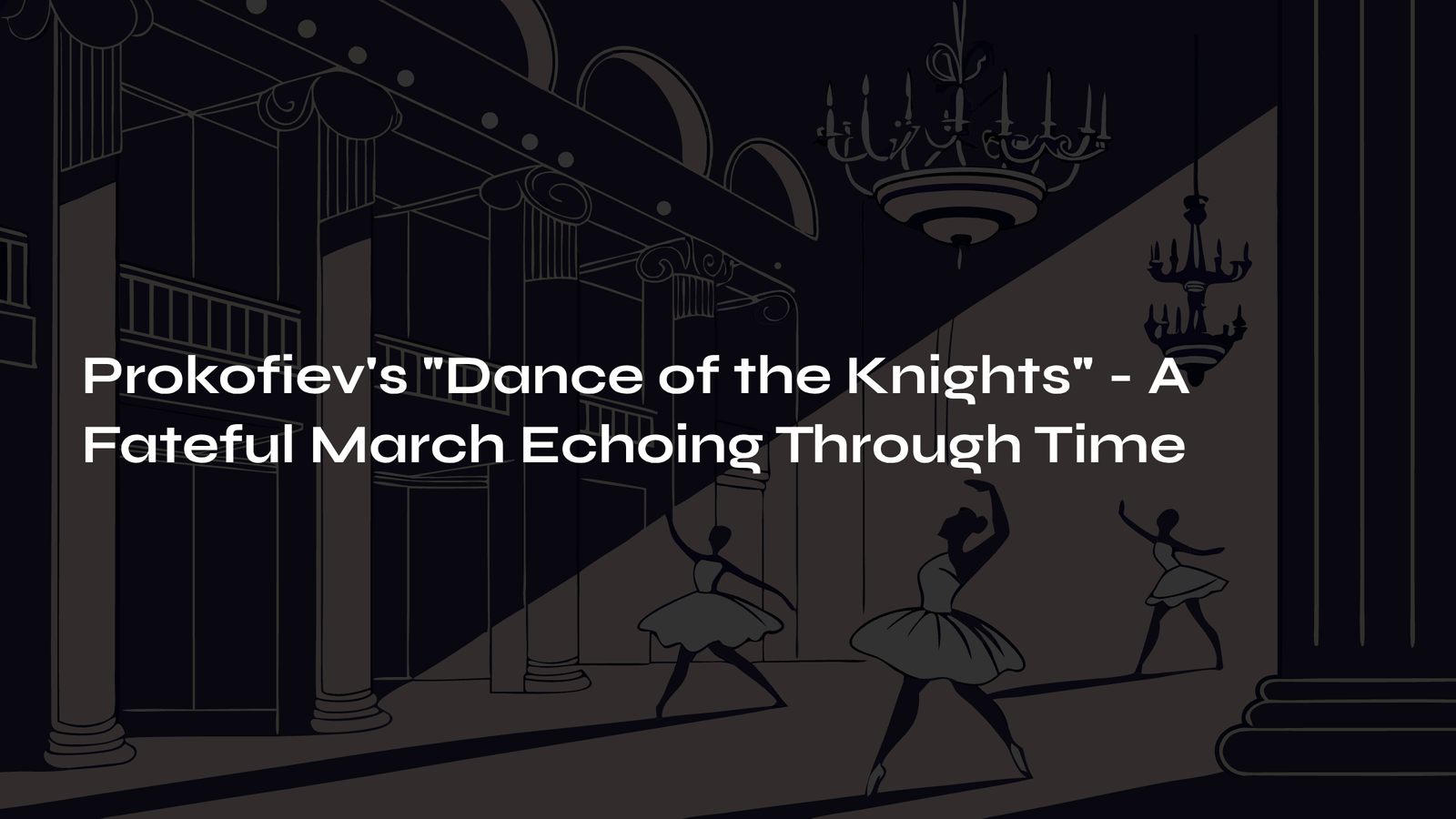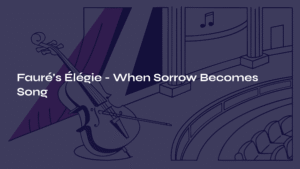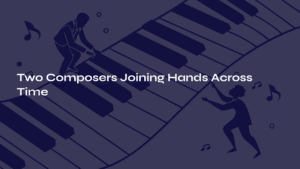Table of Contents
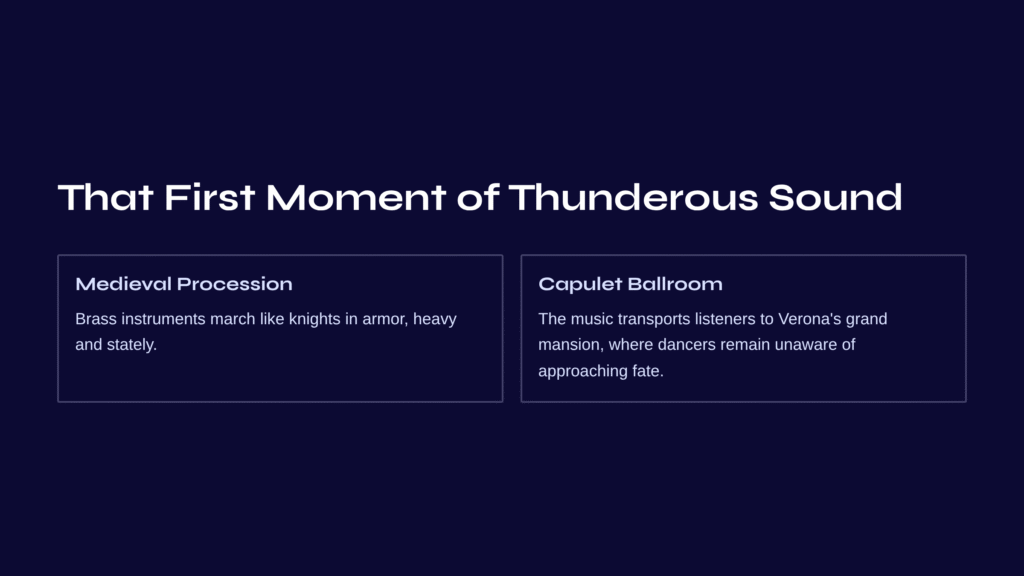
That First Moment, Standing Before the Thunderous Sound
The memory of first hearing this music remains vivid. The brass instruments marching like medieval knights clad in armor, heavy and stately in their procession. In that instant, I was drawn into the grand mansion of Verona, into the very heart of the Capulet ballroom, among people dancing unaware of their approaching fate.
Prokofiev’s “Dance of the Knights” carries something beyond mere ballet music—a powerful premonition. The tension before love begins, the beauty of a moment when tragedy is foretold. Each time I listen to this piece, I vividly experience that fateful night Shakespeare painted for us.
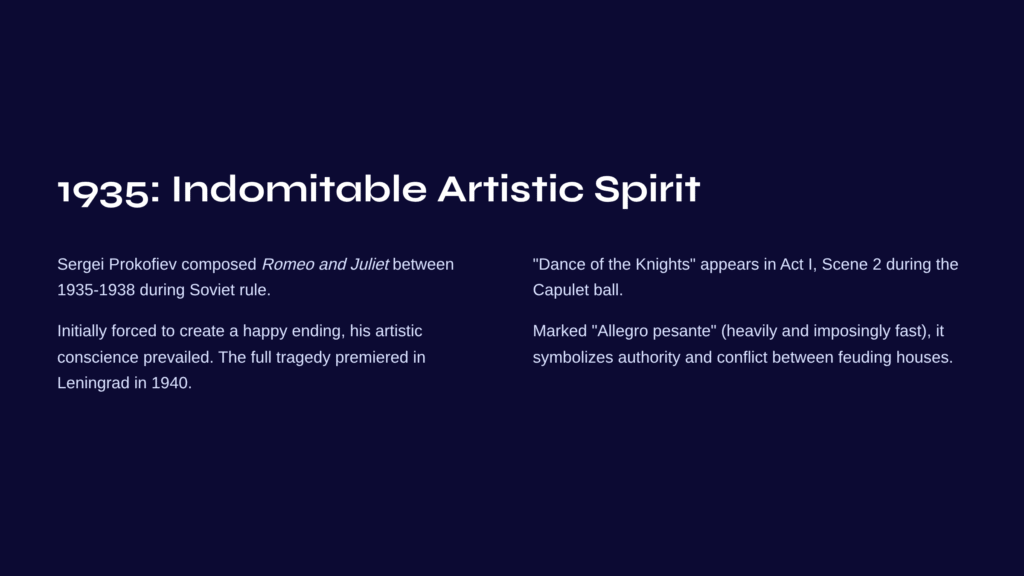
1935: The Indomitable Artistic Spirit of a Soviet Composer
Sergei Prokofiev composed the ballet Romeo and Juliet, Op. 64, between 1935 and 1938. Soviet authorities at the time found Shakespeare’s tragic ending difficult to accept, and Prokofiev initially had to create a version with a happy ending. Yet an artist’s conscience would not permit such compromise. The finished work, premiered in Leningrad in 1940, ultimately preserved the full tragedy of the original.
“Dance of the Knights” appears in Act I, Scene 2 of the ballet, during the Capulet family’s ball. Immediately before Romeo and Juliet’s first encounter, this music symbolizes the authority and conflict between the feuding houses, serving as a prelude that foreshadows the tragedy of love to come. Prokofiev marked this piece “Allegro pesante,” meaning “heavily and imposingly fast.”
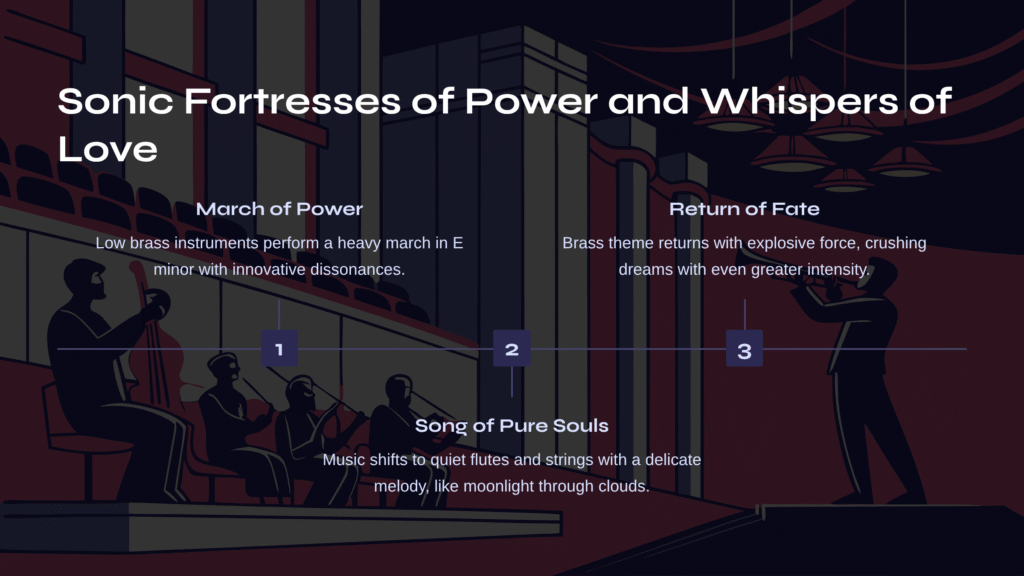
Sonic Fortresses of Power and Whispers of Love
The structure of this piece is built on stark contrasts, as if fate itself possessed two faces.
The First Theme – March of Power
The moment the piece begins, low brass instruments perform a heavy march in E minor. The melody created by horns and trombones sounds like armored knights stepping across stone floors. When staccato strings and powerful percussion accents join in, the music creates a cold, intimidating atmosphere.
Prokofiev’s harmonic language here is truly innovative. Rather than simple E minor, he weaves in sharp dissonances—seconds and tritones—among the brass chords, unsettling the listener. This musically represents the hatred and vengeance hidden beneath the seemingly glittering aristocratic society.
The Second Theme – Song of Pure Souls
But suddenly, like moonlight streaming through clouds, the music shifts to pp (very quietly). Flutes and strings begin playing a delicate, lyrical melody. In this moment, we can feel the quiet stirring of pure love’s possibility, even within the ballroom’s splendor.
The transparent tone of muted strings sounds like young lovers’ whispers. Though they don’t yet know each other, it seems to preview the pure hearts of Romeo and Juliet, destined to meet.
The Return of Fate’s Weight
Such tranquility doesn’t last long. The brass theme returns with fff (very loud) explosive force, as reality’s weight crushes dreams. This time it sounds even more intense and desperate, as if fate declares, “Your love is forbidden.”
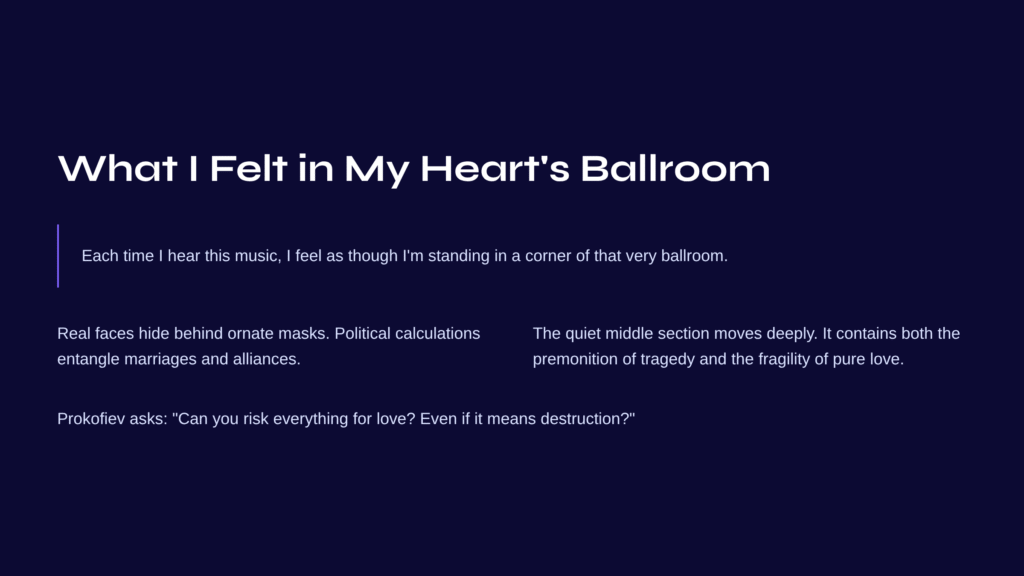
What I Felt in My Heart’s Ballroom
Each time I hear this music, I feel as though I’m standing in a corner of that very ballroom. The real faces hidden behind ornate masks, marriages and alliances entangled in political calculation, and the purity of young love seeking to transcend it all.
The quiet middle section always moves me deeply. Perhaps because the premonition of tragedy already permeates that beautiful melody? Or because I know how fragile pure love is when faced with reality’s walls?
Through this piece, Prokofiev seems to ask us: “Can you risk everything for love? Even if it means destruction?” Before that question, I always feel humbled.
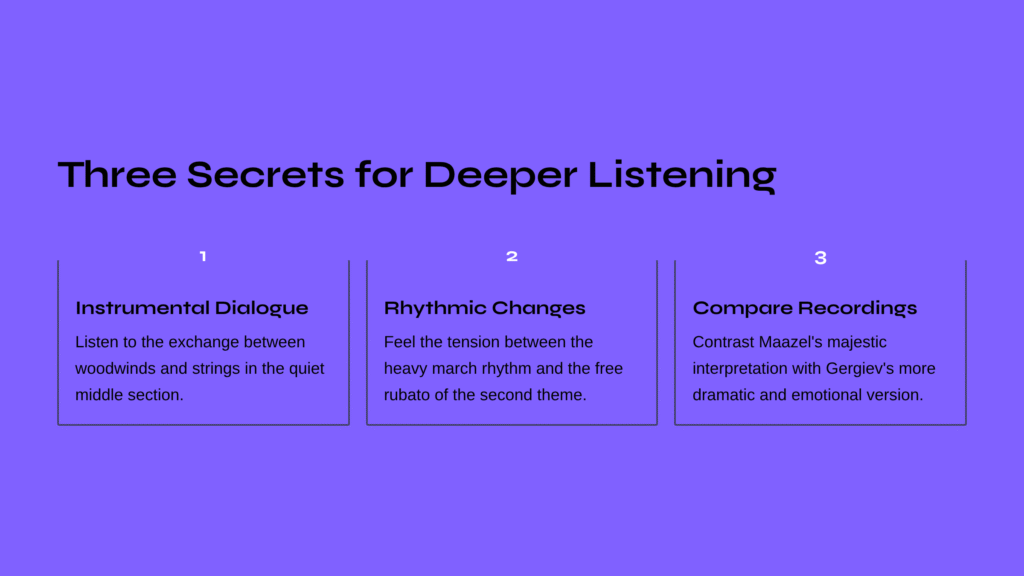
Three Secrets for Deeper Listening
First – Listen to the Instrumental Dialogue
When listening to this piece, don’t focus solely on the brass instruments’ grandeur. Pay close attention to the dialogue between woodwinds and strings in the quiet middle section. Particularly in the melody exchanged between flute and violin, you can glimpse a preview of the future love duet.
Second – Feel the Rhythmic Changes
Prokofiev uses rhythm with great precision in this piece. Listen alternately to the heavy march rhythm of the first theme and the free rubato of the second theme, feeling the tension between fate and free will with your entire being.
Third – Compare Different Recordings
Lorin Maazel’s Cleveland Orchestra version (1973) is famous for its orthodox and majestic interpretation, while Valery Gergiev’s London Symphony version (2011) is more dramatic and emotional. Comparing both versions shows how differently the same piece can feel depending on the conductor.

A Timeless Song of Love
Prokofiev’s “Dance of the Knights” transcends simple ballet music to address fundamental human dilemmas: social status versus personal happiness, family honor versus individual love, the eternal conflict between reality and idealism.
This music continues to move people’s hearts after more than 80 years because the emotions it contains transcend time. Whether as the BBC’s “Apprentice” theme music, in film soundtracks, or in concert hall repertoires, this constantly reborn piece allows us to re-experience that fateful night in Verona.
And in that moment, through the music, we come to understand: true love transcends time and space, and its beauty can transform even tragic endings. The story Prokofiev tells us continues to resonate deep within our hearts today.
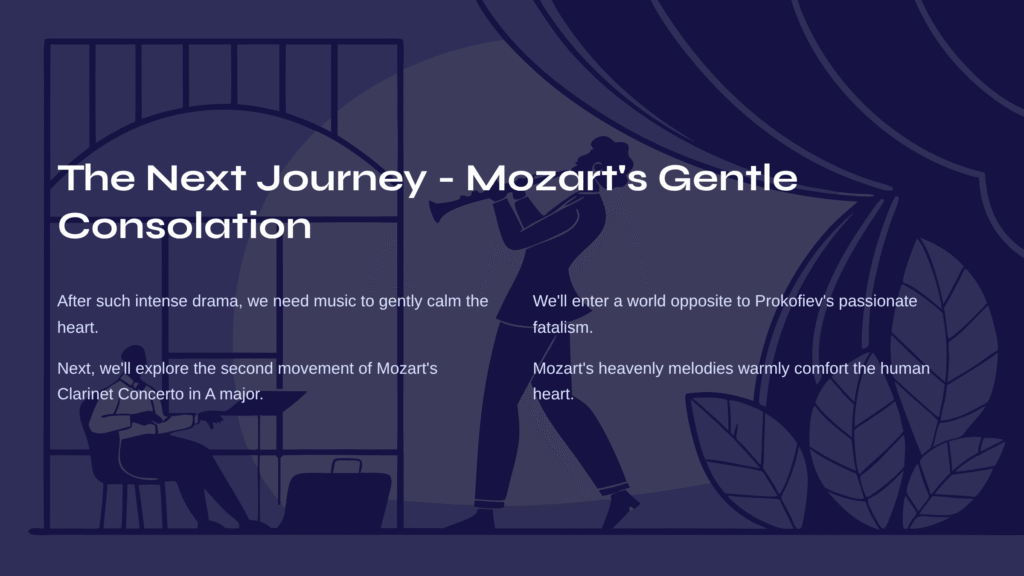
The Next Journey – Mozart’s Gentle Consolation
After such intense and dramatic music, sometimes we need a piece that can gently calm the heart. The next piece we’ll explore together is the second movement of Mozart’s Clarinet Concerto in A major.
Let’s enter a world completely opposite to Prokofiev’s passionate fatalism—into Mozart’s heavenly melodies that warmly comfort the human heart. We’ll share the unique timbral charm of the clarinet and the deep contemplation of Mozart’s later years contained within it.
